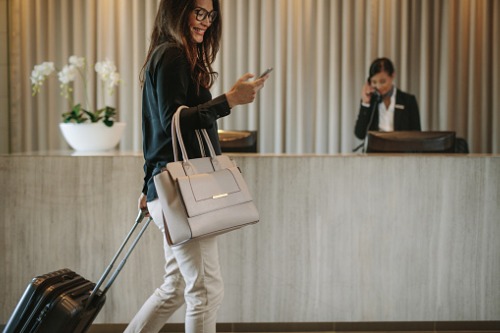Hotel delinquencies on the rise, as the outlook for the hospitality and lodging sector remains grim

There is an overwhelming number of contributing factors to the pummeling of the travel and tourism industry across the world. With travel bans, social distancing rules and job losses, occupancy across hotels plummeted, as travel plans, destination weddings, conferences, and business travel ground to a complete halt. Given this situation, people are not only avoiding travel now, but may continue to delay travel even after restrictions loosen, resulting in the recovery for the lodging sector to trail behind some of the others.
While the impact across all property types has been substantial, lodging has arguably taken the largest beating. Since the public health issue began escalating in mid-February in the U.S., hotels have already lost more than $18 billion in room revenue, according to the American Hotels and Lodging Association (AHLA). CBRE is projecting revenue losses of 80% for the second quarter, with hotels currently on pace to lose more than $500 million in room revenue per day.
According to a report by Trepp, the lodging sector accounts for about 16% of outstanding mortgage debt, with roughly 3000 CMBS loans outstanding totaling over $86 billion. California and Florida each accounted for more than 10% of the outstanding balance. U.S. hotel gross operating profit per available room fell more than 101% in March, according to STR research.
“Just a few months ago, we were talking about 2020 being a challenging year for profitability given flattening occupancy levels and a lack of hotelier pricing power. Now we’re at a point where thousands of properties have closed around the country due to their inability to operate at any level of profitability,” said Joseph Rael, STR’s senior director of financial performance.
Trepp also reported an uptick in the delinquency rate as a result of the grim performance from hotels across the country. The CMBS delinquency rate for lodging loans jumped by 118 basis points to 2.71% in April, accounting for the largest increase among all property types. Last month, Trepp says 27 loans totaling over $1 billion were reported as newly delinquent. Delinquencies are also expected to continue to rise in coming months, considering most CMBS borrowers impacted by the pandemic aren’t identified as delinquent yet.
“The reason being most borrowers made their March 1 payments as that payment was due before the headlines and shelter-at-home orders became widespread,” the Trepp report stated. “While many of these borrowers also did not make their April 1 payments, only borrowers who miss May 1 payment would be the ones considered 30 days delinquent (unless the borrower is granted a forbearance).”
In the meantime, the bleak outlook for the lodging sector is triggering consequences that are contributing to a steeper decline. Due to many hotels having closed completely, about 70% hotel employees have been laid off or furloughed, according to AHLA.
Luxury vs. Economy
Luxury hotels with significant reserve and accessible liquidity may be able to cling on for survival, while other, more cash-strapped hotels may not survive the downturn, according to Trepp.
JLL however, is reporting that economy hotels have emerged as leaders in the hotel sector by housing essential workers on the frontlines of the pandemic. Budget hotels in the U.S. saw occupancy rates in the 40 to 45% range for the week ending April 4, compared to 20% overall, according to JLL Research. Some governments are working directly with hotel owners to help house workers.
“Economy and select-service hotels are outperforming in the U.S. from an occupancy perspective due to medical-affiliated demand, including demand from the National Guard,” said Geraldine Guichardo, global head of research for JLL’s hotel and hospitality group. “In areas across the globe, these hotels, often located in or near medical centers, provide much-needed private space for essential workers who do not want to risk exposing the people in their homes.”



